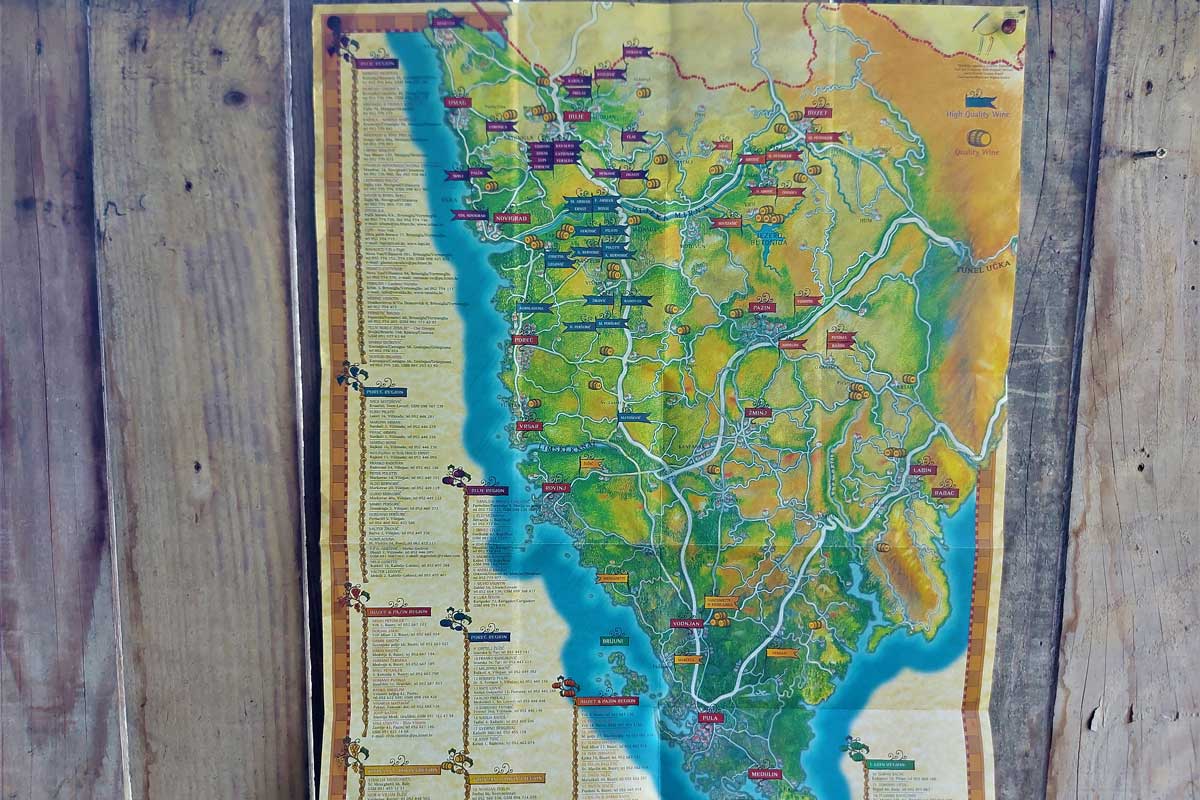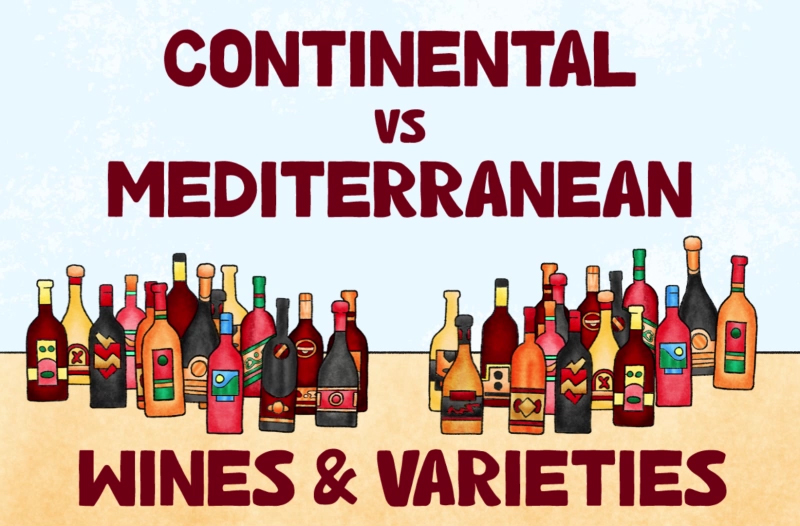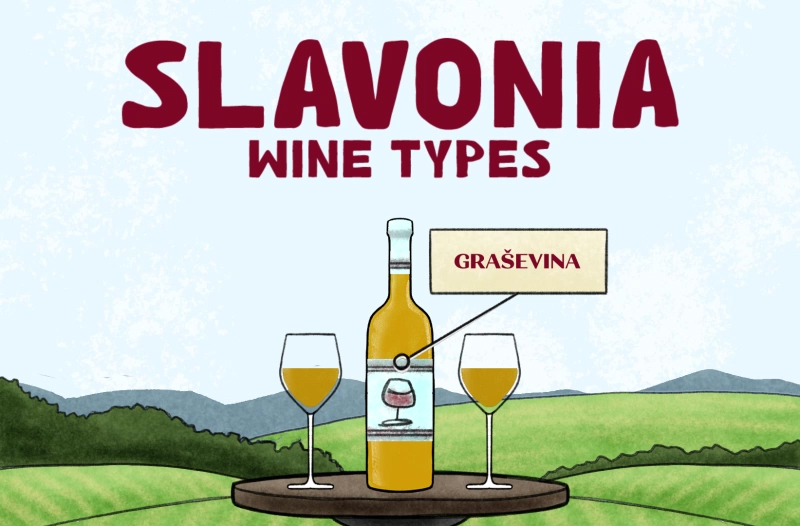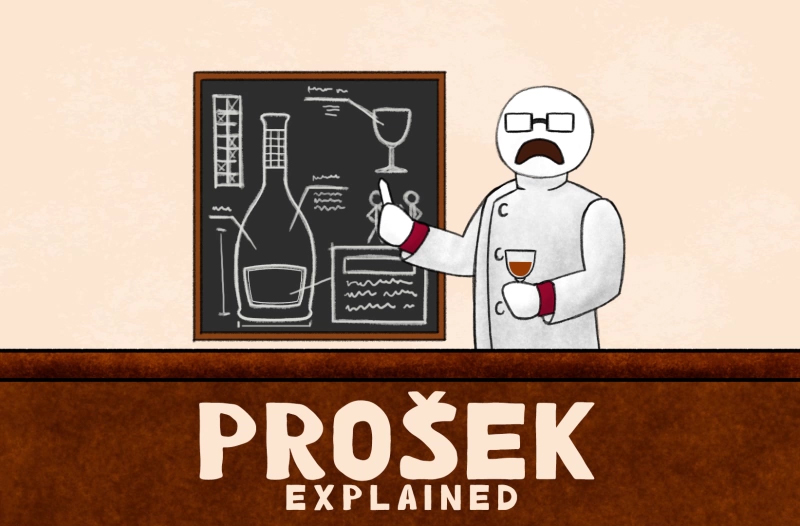Istria Wine Region – Everything You Need To Know and more
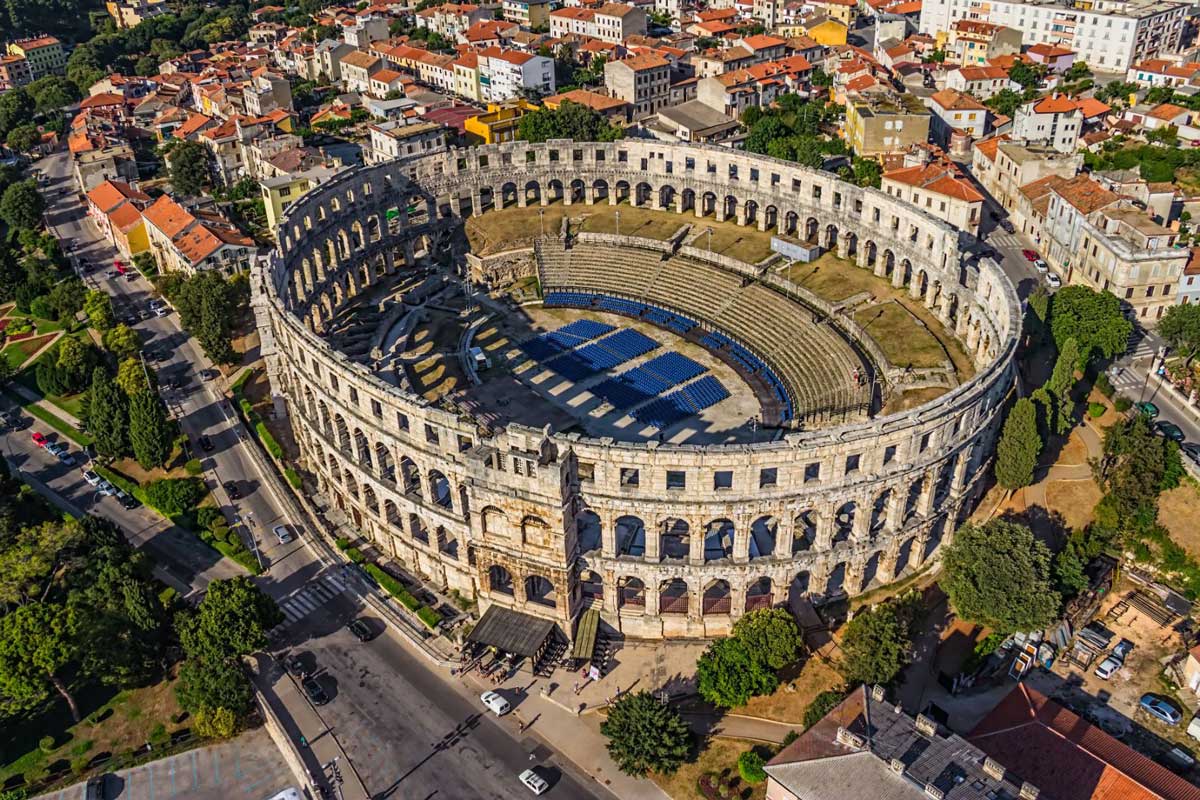
Istrian wines are at the forefront of Croatian winemaking recognition in a global landscape. With its culture and heritage, Istria belongs to the Old World winemaking tradition. Istria is also diverse from other winemaking regions, thus achieving its own unique purpose in the biodiversity of the wine world.
Short Overview of Istrian Winemaking
The ancient Romans may have cheered on gladiator spectacles in the grandeur of Pula Amphitheatre, but little did they know that the very land they stood upon would give rise to a wine tradition that continues to captivate palates centuries later. As history unfolded, Istria emerged as a veritable haven of fine food and wine, weaving a tapestry of flavours that stretch from the ancient streets of Pula to the depths of Pazin Chasm, from the subterranean marvels of Baredine Cave to the architectural beauty of Rovinj’s Euphrasian Basilica.
Bounded by the cerulean embrace of the Adriatic Sea and cradled by lush green hills adorned with medieval castles, Istria stands as a testament to the harmonious marriage of nature and culture. Its undulating landscapes host not only sprawling vineyards but also the elusive truffle forests that have become synonymous with indulgence, as well as the olive groves yielding some of Europe’s most esteemed olive oils. Just as Istrian truffles and olive oils find perfect companionship on the plate, so do the wines mirror the peninsula’s unique terroir, reflecting the very essence of the land that nurtures them.
Enduring the ebb and flow of history, Istria has worn the mantles of numerous cultures throughout its existence. A witness to the rise and fall of empires, Istria has been a fleeting possession of Napoleon’s France, a cherished dominion of the Austrian Empire, an Italian jewel, a part of Yugoslavia, and now, a proud region within the embrace of Croatia and Slovenia. Each passing epoch has woven a thread into the rich fabric of Istria’s identity, leaving an indelible mark on its winemaking traditions.
Istria’s wines, resplendent with character and history, stand at the forefront of Croatian winemaking on the global stage. Embracing its cultural heritage, Istria remains a bastion of the Old World winemaking tradition, a custodian of techniques and practices handed down through generations. However, what sets Istria apart is its diversity—a diversity that extends beyond its captivating landscapes and finds expression in its wines. The region’s winemakers have harnessed this diversity to craft wines that are unmistakably Istrian, wines that bear the imprint of the land, the climate, and the hands that tend the vines.
Istria’s winemaking journey is not merely a story of viticulture; it is a story of resilience, adaptation, and innovation. It is a tale of vines that have weathered the shifting tides of history, producing wines that carry the whispers of time in every sip. As wine enthusiasts raise their glasses to the wines of Istria, they partake in communion with a legacy that spans centuries—a legacy that not only tantalises the senses but also pays homage to the brave spirit of a region that has embraced the art of winemaking as an inseparable part of its soul.
In the following sections of this article, we will delve deeper into the cultural significance of Istrian winemaking, exploring its historical role models, its connection to the land, and the remarkable wines that have emerged as ambassadors of this enchanting peninsula.
Istrian Landscape and Climate
Location, Climate, and Impact on Wine Production
Istria, a prominent peninsula embracing the Adriatic Sea, holds a geographical embrace that spans Croatia, Slovenia, and Italy. This landmass of 3,160 km² finds its heart predominantly in Croatia (90%), with a mere 1% shared among three Italian communes.
The climatic narrative of Istria is a tale of Mediterranean, sub-Mediterranean, and continental influences, each playing their part in shaping this picturesque expanse. Istria’s calling card is a strategic location in a warm climate zone, positioned where Western air currents intertwine.
As the Adriatic’s northern boundary, Istria enjoys an intimate relationship with the sea. Western and northwest air currents, borne by the Atlantic winds, impart warmth and moisture to this diverse terrain. A transition zone between continents, Istria benefits from the sea’s temperance, taming North African dryness with its soothing embrace.
Winter brings mildness and moisture, a result of Mediterranean and Adriatic origins. In stark contrast, sultry summer unveils its true colours, casting the landscape with a palette of grape-laden flavours.
However, equilibrium comes with a cost. European continental influence sends icy breaths from the Alps, bestowing frost and cold upon the land. Altitude becomes a factor, with higher regions receiving more precipitation than their low-lying counterparts.
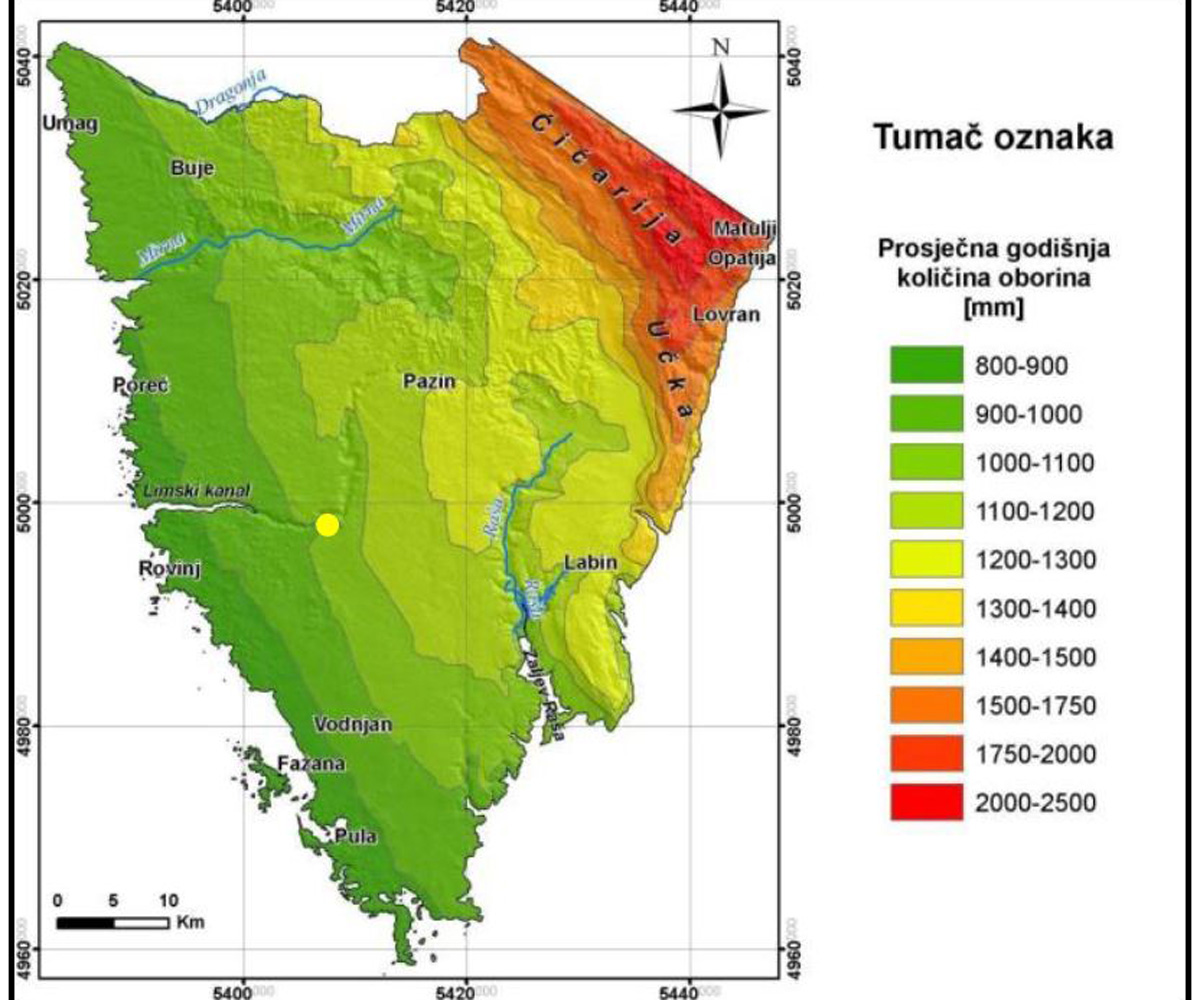
Topography engages in this meteorological symphony, too. The northeast hills invite southwest moisture, becoming the region’s rainiest pocket. Meanwhile, the west coast and southern lands bear the brunt of rainfall scarcity. A dance of precipitation unfolds, with winter and early spring revealing dry interludes.
Amidst this weather’s unpredictability, winds shape the narrative. The north’s Bura and southeast’s Jugo winds punctuate the seasons. Winter’s storms bring dramatic intensity, adding crescendos to nature’s symphony.
Summer hosts a coastal ballet of air, with a daytime mistral from the sea and a nocturnal burin, flowing landward as night descends. These winds dictate nature’s tempo and influence viticulturists’ strategies. As the terroir absorbs these influences, Istrian wines emerge, each bottle telling a story of the land, the climate, and the passionate hands that shape its liquid essence.
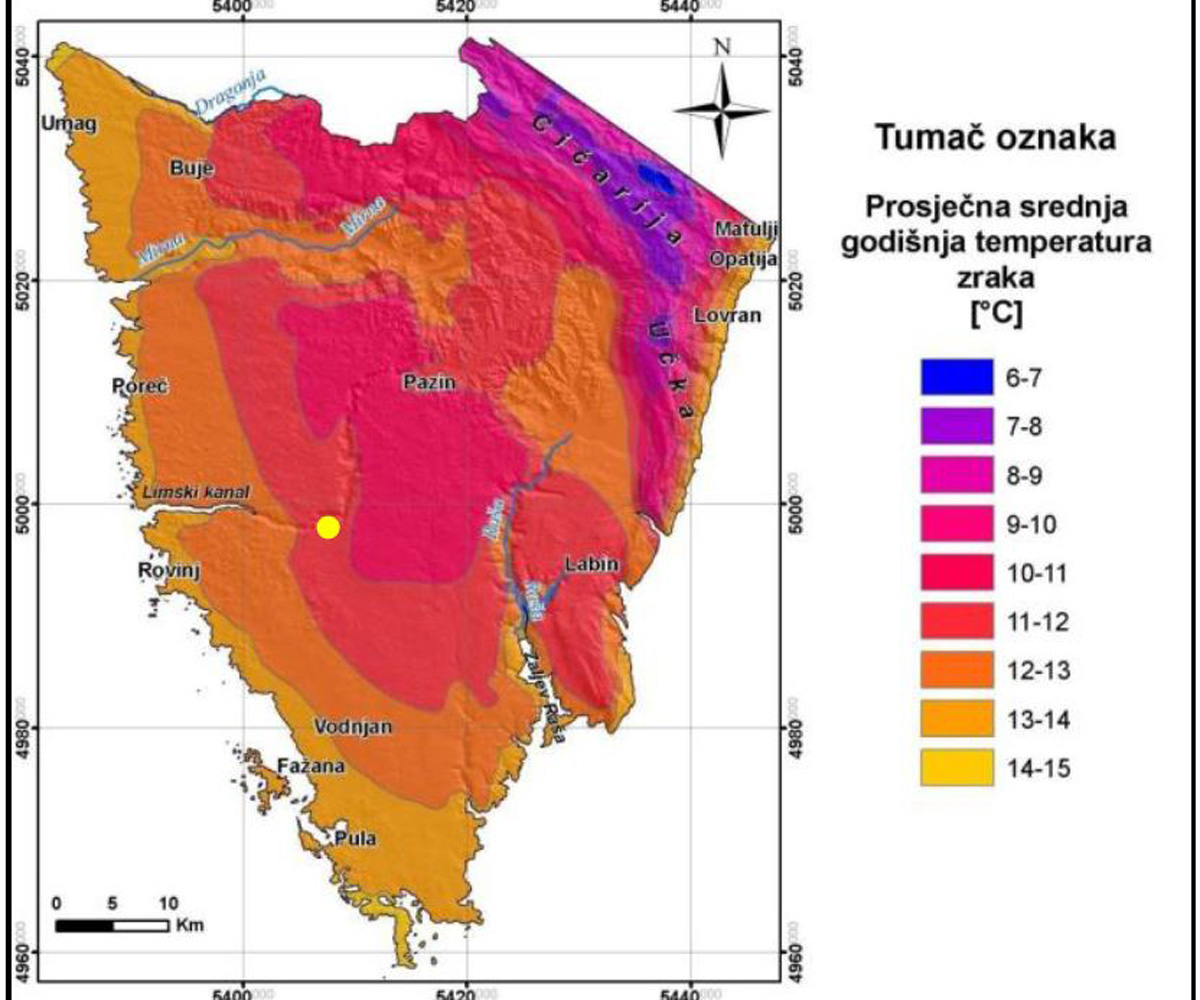
Istrian diverse terroir
Istria’s bountiful offerings to winemakers include its soil, a foundational gift that paints a vivid canvas of potential. The land where vines thrive bears witness to the region’s geological past, with each soil type possessing a distinct personality that shapes the wines they nurture.
Key vineyards in Istria find their home on red, white, or gray soil.
White Istria unfurls as the Učka and Ćićarija mountain massifs stretch from the North and Northeast—pockets of viticultural significance grace central, northern, and northwestern Istria. Aptly named “White Istria,” this area boasts stony surfaces and sparse vegetation, where the soil’s untamed character infuses grapes with unique expressions.
Travelling further, one discovers Gray Istria, defined by gray flysch, a blend of marl, sandstone, and softer limestone. In this central Istrian expanse, draped in understated gray, vines create wines of depth and character.
Red Istria, or “terra rossa,” emerges where the sun and sea meet on the western coast. This iconic soil embodies the Mediterranean climate with its red-brown or yellow-red hue. A blend of clay, sand, and dust, Red Istria cradles life with its water-retention ability, a vital support during arid summers. Iron and aluminium oxides give the soil its rich red hue, a visual testament to its mineral-rich heritage.
In Brtonigla, a small hillside town, this terroir mosaic converges in an area barely larger than 33 square kilometres. Four soil types—white, red, gray, and black—compose an artist’s palette, with the indigenous Istrian Malvasia grape taking centre stage. Each soil type contributes a unique imprint as Malvasia finds its home on these diverse plots.
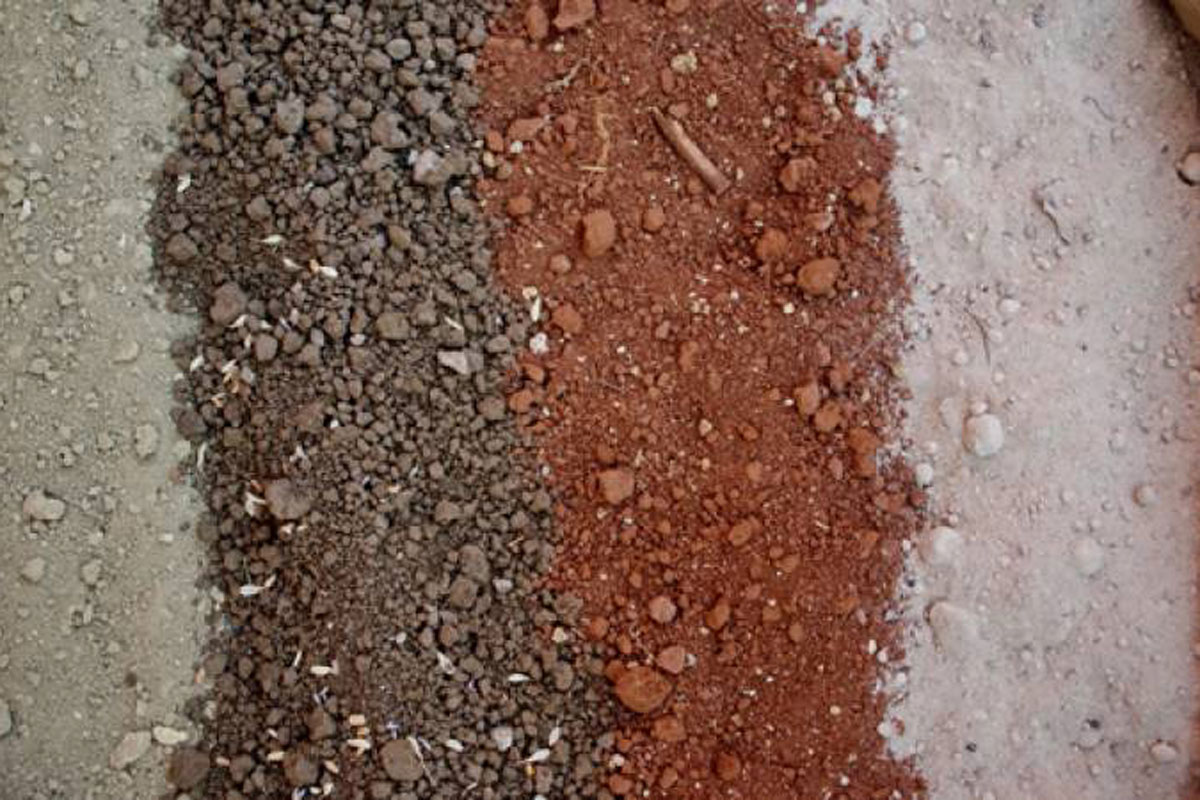
Natural elements—sunny slopes, gentle winds, nurturing soil—harmonise to create the uniqueness distinguishing Istrian wines on the global stage.
In the vineyards of White Istria, a crisp elegance graces white wines. Istrian Malvasia, in particular, boasts an aromatic profile adorned with zesty citrus, green apple, and pronounced minerality—a unique trait less common in Malvasia Istriana from other soil types.Conversely, Red Istria’s terra rossa yields wines of captivating intensity. The iron-rich soil imparts depth and richness. Water retention in the clay offers respite to vines during summer, producing powerful yet elegant wines. Teran and Refošk, Istrian reds, embody robust red fruit character accented by spice and earthiness.
Sub-regions of Istria
Istria’s wine diversity stems from a mix of administrative divisions and factors like microclimate, soil, and culture.
Although, Istria and Kvarner together form one of Croatia’s four main wine regions (Slavonia, Bregovita Hrvatska, Istria, and Kvarner, Dalmatia), eastern and western Istria exhibit more subtle distinctions compared to the pronounced differences between Istria and Kvarner.
Nevertheless, it is useful to distinguish between different Istrian sub-regions:
- West Istria (Buje, Poreč, Rovinj)
- Central Istria (Pazin, Motovun)
- South Istria (Pula)
- East Istria (Labin)
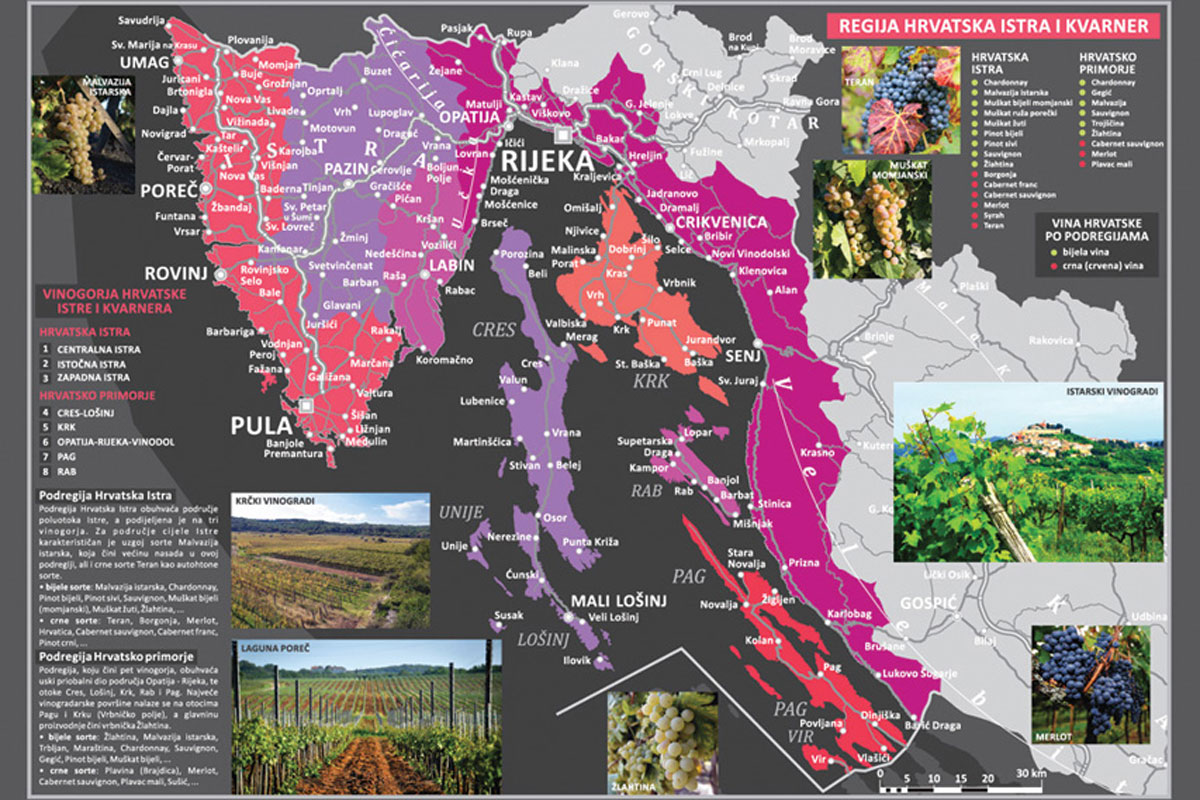
Bujština – From Piran bay to Mirna river
“Bujština,” encompassing Umag and Buje, spans from the Bay of Piran in the north to the Mirna Valley in the south. Buje and its charming neighbors like Momjan, Grožnjan, and Brtonigla are nestled in landscapes shaped by limestone and flysch formations (marl, sandstone, and clay), nurturing a rich terroir for winemaking.
Mediterranean and sub-Mediterranean vegetation flourishes. Fertile red soil (terra rossa) paints much of this region, while vineyards on white soil (terre bianche) add diversity. Prominent varieties like Malvazija, Teran, and Momjan Muscat reflect the land’s character through their flavors.
Most notable wineries:
- Coronica
- Kozolović
- Kabola
- Degrassi
- Clai
- Franković
Poreština: From Mirna river to Lim bay
Spanning the area between the Mirna River and the enchanting Lim Bay, Poreština boasts a distinctive character all its own. A rocky limestone plateau slopes gently toward the sea, rising from the coast to an average elevation of 200 to 300 meters.
This terrain, embraced by the Mediterranean climate, and the land’s fertility favours the cultivation of vines and olives, with pockets of winemaking excellence found in Vižinada, Višnjan, and Kaštelir.
Most notable wineries:
- Arman M.
- Matošević
- Radovan
- Ritoša
- Peršurić
- Rossi
- Agrolaguna
Rovinjština: From Lim bay to Pula area
Rovinj unfolds as a captivating sub-region, from the Gulf of Lim to the area of the vibrant city of Pula,
This area is mostly a limestone rocky plateau slightly inclined towards the sea so that from the sea coast, which is low and very indented (many islands and islets), it rises slightly to the average altitude of approximately 200 to 300 m.
Most notable winemakers:
- Meneghetti
- Dobravac
- Lunika
- Collis
- San Tommaso
- Vivoda
Central Istria: Pazin and Motovun
The central part of Istria is filled with contrast and diversity. The vegetation in most of it is almost continental, as is the climate. Mediterranean influences are noticeable in the peripheral areas in the west and southwest.
Central Istria is adorned with a hilly karst relief, characterised by a limestone foundation that paints the landscape. In the south, red rocks south of Pazin add an intriguing touch.
As the landscape transitions, so too do the possibilities it offers. Transition zones create a fascinating dance between the vine and the environment in the southeast areas.
In the northeast, catchment areas emerge, their flysch composition contributing to a unique terroir.
Most notable winemakers:
- Benvenuti
- Roxanich
- Fakin
- Domaine Koquelicot
- Dvorac Belaj
- Piquentum
South Istria: Pula
The southern part of Istria, of which Pula is the center of gravity, is mainly a limestone area and, typical of karst, without surface water, except for occasional puddles. The climate and vegetation have entirely Mediterranean characteristics, and cereals, vines, and olives thrive on the fertile red soil.
Most notable winemakers:
- Trapan
- Medea
East Istria: Labin
The bedrock of eastern Istria is predominantly rugged limestone. Towards the north, eastern Istria shares its border with the flysch hills of central Istria, marked by marl and sandstone formations.
The climate and vegetation mark the landscape in typical Mediterranean colours. Yet, as you venture towards the northern fringes, a transition takes place, gently ushering in continental elements.
In this rugged terrain, traditional agriculture thrives, with small-scale vegetable cultivation, cereal crops, and vineyards dotting the landscape.
Most notable winemakers:
- Licul Romeo
- San Martino
Origins of Winemaking in Istria
Istria’s winemaking dates back to Roman times, evident from records of grape cultivation. In the 6th century, Cassiodorus praised Istrian products, including wine, oil, and grain. After Venetian rule, various forces governed the Istrian peninsula.
In the early 20th century, vineyards were restored after the Phylloxera outbreak. Istrian winemaking evolved with changing grape varieties and modern techniques. Just before WWII, Istria reached its peak vineyard area, which later decreased significantly.
Post the 1990s homeland war, a new winemaking generation sparked a transformative movement. Istria’s wine prowess expanded across sub-regions, captivating enthusiasts worldwide.
Today, Istria balances tradition and innovation, crafting wines that reflect its rich history.
Cultural Influence on Istrian Winemaking Traditions
Istrian wines have absorbed a range of cultural influences throughout history, blending ancient practices with modern innovations.
The techniques of Roman winemaking introduced elements such as barrel aging and specific grape varieties, which have significantly shaped the development of winemaking in the region.
During the rule of the Venetian Republic, architectural and winemaking methods left a distinct mark on Istrian winemaking. Venetian craftsmanship became synonymous with the region’s wine production, and the discerning palates of Venetian nobility elevated the appreciation of wine to a sensory journey.
The Venetians introduced grape varieties like Malvasia to Istria, adapting them to the local terroir. This legacy continues today, as Istrian winemakers maintain a strong commitment to quality, terroir-driven production, and innovative techniques, echoing the enduring influence of Venetian traditions.
Historical Milestones Shaping Istrian Wine
- Roman Roots: Istria’s winemaking originates from Roman times, influencing future practices.
- Venetian Rule: Venetian Republic’s influence introduced architecture, grape varieties, and techniques.
- Phylloxera Impact: Late 19th-century outbreak led to replanting, adoption of modern viticultural methods.
- 20th Century Evolution: Restored vineyards, shifts in grape varieties, and indigenous varieties’ revival.
- Istrian Wine Revolution: Mid 1990s heralded quality-focused winemaking, gradual international recognition.
- Modernisation Efforts: Embrace of modern techniques, organic, biodynamic practices in recent decades.
- Wine Tourism Integration: Istrian wineries became part of the region’s tourism, offering immersive experiences.
Istrian Grape Varieties and Styles
Istria’s vineyards offer a blend of tradition and innovation, showcasing a range of grape varieties that capture the essence of the region.
Indigenous Treasures are dominantly expressed through Malvasia Istriana, Teran, Momian Muscat, and Moscato Rosa.
International Acclaim holds the Merlot, Cabernet Sauvignon, Sauvignon Blanc, and Chardonnay
Following are the main indigenous varieties of Istria with key features:
Malvasia Istriana
- Thrives in hilly flysch landscapes, terraced hills of the Croatian and Slovenian parts of Istria, extending to Italian regions like Friuli and the Slovenian Karst, even to Vipava valley.
- Around 60% of all cultivated varieties in Istria is Malvasia Istriana
- Pale straw-yellow with green hints, aromas of acacia blossoms, green apples, and almonds, refreshing palate with a touch of harmony
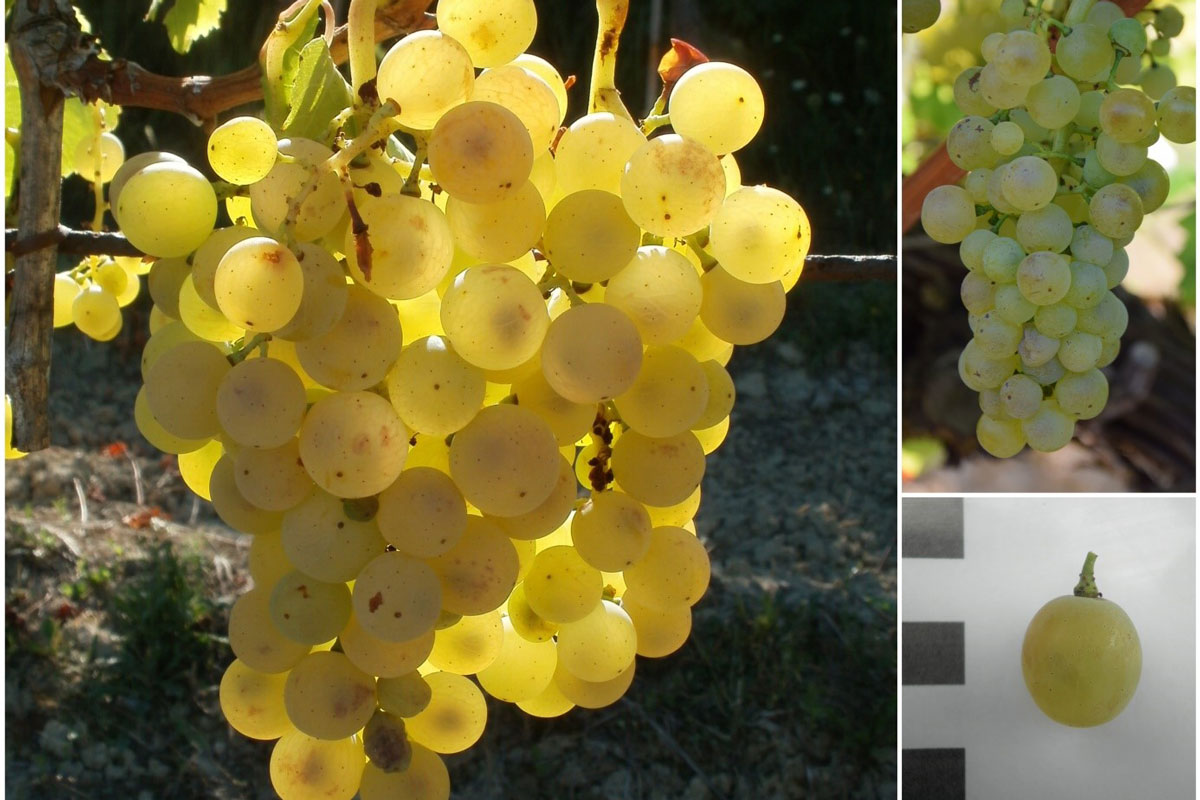
Teran
- Late-ripening grape thriving in sun-soaked Istria
- Robust and resistant with ruby-red berries, with typical intensive violet color especially when young
- Express synergy of forest fruits and earthy (irony) undertones
- Solid structure with naturally elevated acids and pleasing tannins, ideal for red-wine dishes
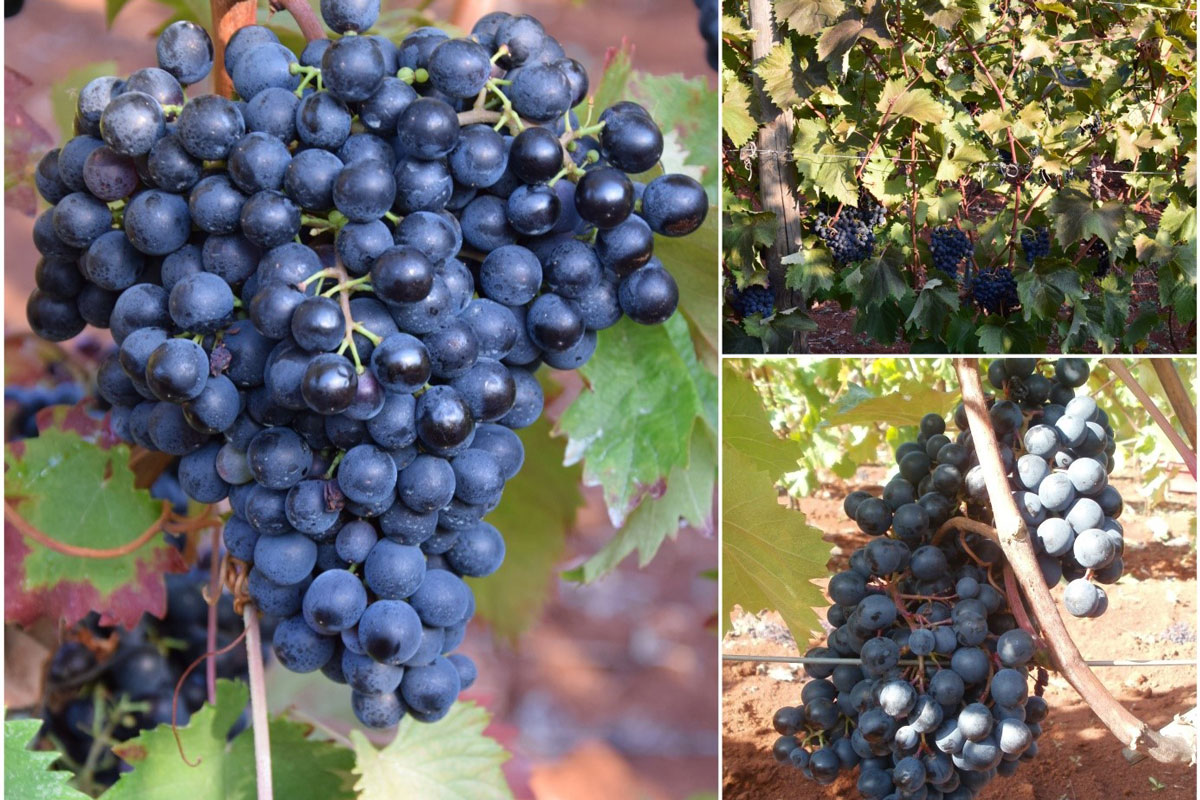
Momjan Muscat
- Evolved in Momjan’s unique climate and soil
- Delicate bouquet of carnations, roses, and sage
- Balanced sweetness with a weightless palate
- A joy for connoisseurs of sweet wines
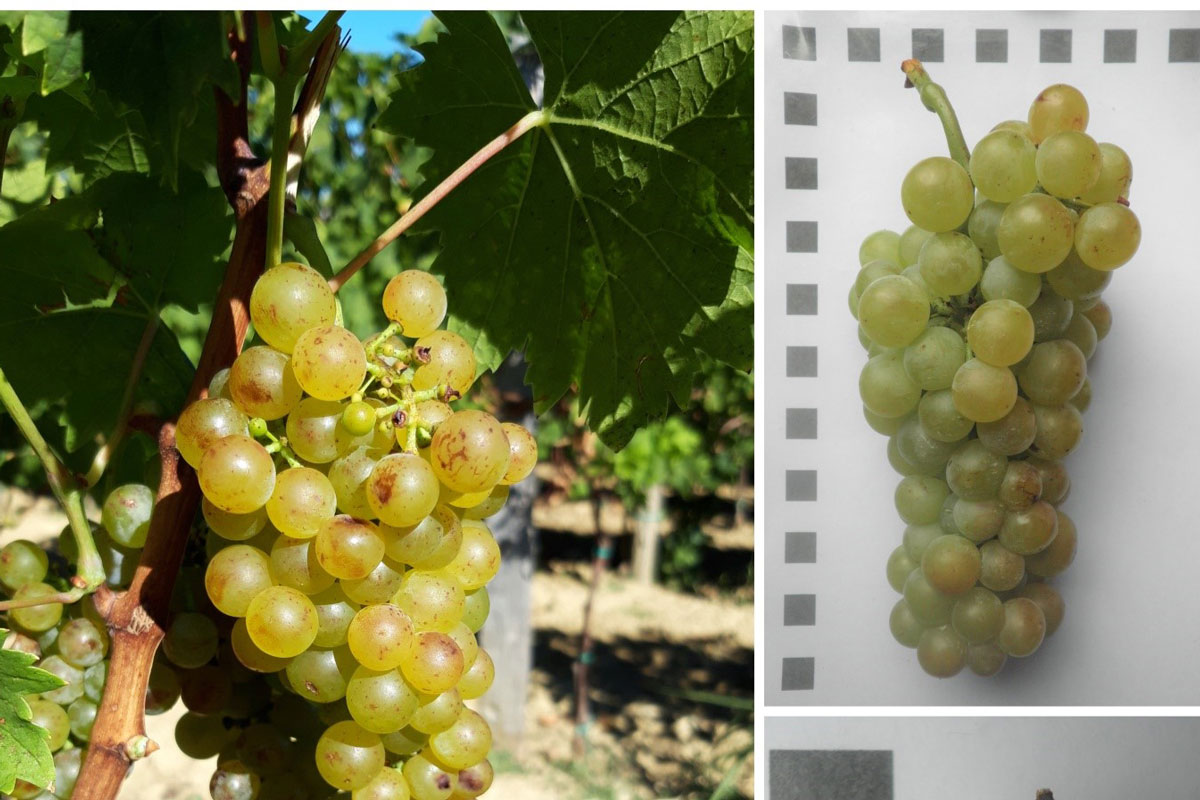
Moscato Rosa
- Female flowering variety with red and blue-hued berries
- Captivating rose petal fragrance
- Ranges from luminous red to ruby in colour
- Soft, rounded taste with floral-fruity bouquet. Require a residual sweetness to achieve perfect harmony
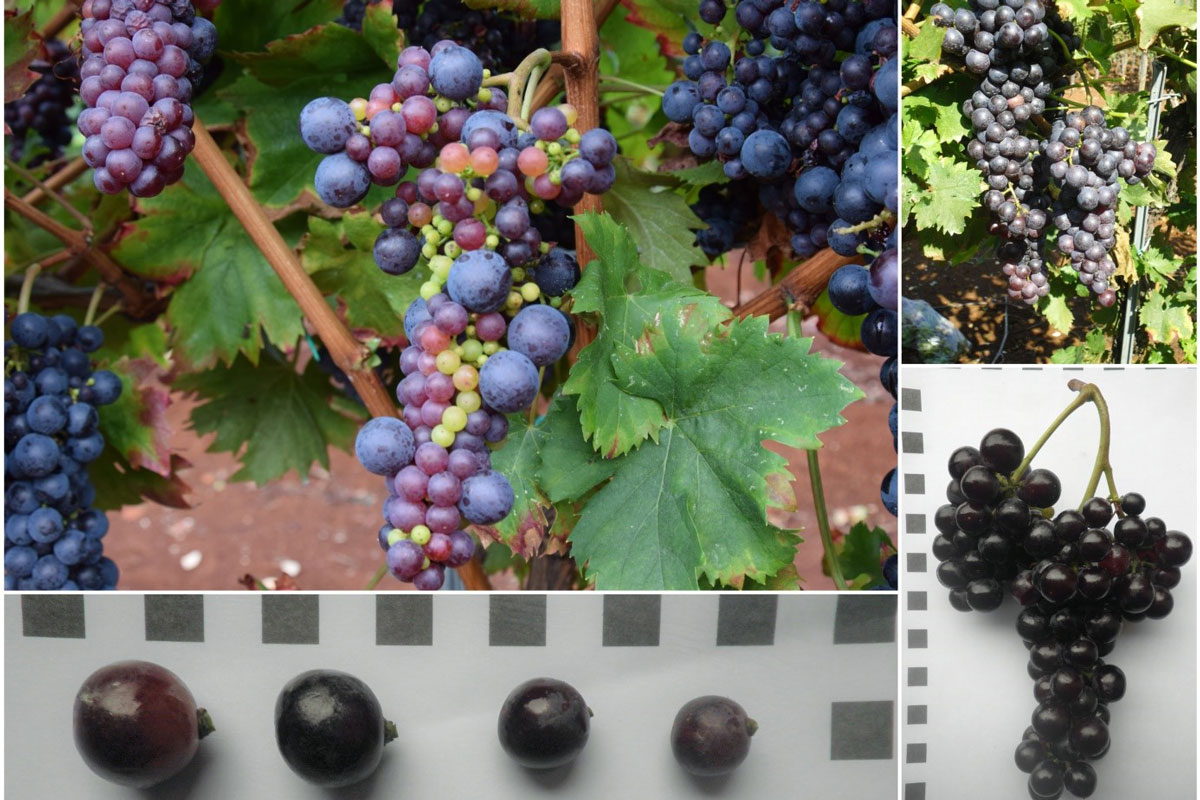
The range of wine styles made in Istria
In Istria, practically every wine style thrives:
- Sparkling Wine,
- Light-Bodied White Wine
- Full-Bodied White Wine
- Aromatic (sweet) White Wine
- Rosé Wine
- Light-to-Medium Bodied Red Wine
- Full-Bodied Red Wine
- Dessert Wine
Light white wines embody the essence of Istria’s Mediterranean charm. Although that wine style is not reserved for Malvasia Istriana alone, Malvasia is, alone or in blends, an essential expression of Istrian wine.
The same variety shows exceptionally worthy when built to last. There are many successful examples of structured, full-bodied Malvasia wines.
Until recently, making sparking wines was reserved for a small number of family owned wineries who craft that task. Nowadays, many wineries use Prosecco producers in a nerby Valdobiaddene to make bubbles from their Malvasia, or other grape.
Vitality of Teran, and other red grape varieties from Istrian soil is ideally suited for making Rose wine.
Istria’s red wines range from the delicate to the robust. Most of the Istrian reds are medium-bodied or fuller-bodied red wines. However, with notable exceptions.
Needless to say, with tradition of Momian Muscat and rising popularity of red Muscat, Istria is making some of the most beautiful sweet wines.
The Wineries of Istria
In the sun-kissed heart of Istria, a constellation of wineries awaits, each a testament to the region’s dedication to viticultural artistry. While the list is not exhaustive, we invite you to delve into the essence of these distinguished names, where innovation, tradition, and passion converge.
Here you can explore more about the particular wineries. At the same time, this chapter aims to provide as comprehensive a list as possible of every active winery in Istria by the sub-region.
Let’s start from the beginning, wineries of Bujština:
- Degrassi
- Kraljević CUJ
- Coronica
- Kabola
- Kozlović
- Prelac
- Veralda
- Clai
- Cattunar
- Dešković
- Zigante
- Leonardo Palčić
- Franković
- Monte Rosso
- Benčić
- Capo vina
- Ravalico
- Fiore vina
- Novacco
- Pervino
- OMO
In Poreč region, esteemed wineries:
- Radovan
- Matošević
- Arman Marijan
- Rossi
- Pilato
- Poletti
- Geržinić
- Legovina
- Ritoša
- Cosseto
- Terzolo
- G.Ferenac
- B.Ferenac
- Anđelo Brčić
- Damjanić
- Peršurić
- Deklić
- Sosich
- Bernobić
- Matić
- Bastian
- Agrolaguna
In Rovinj region:
- Meneghetti
- Dobravac
- Vivoda
- San Tommaso
- Stancija Collis
In the South Istria:
- Trapan
- Medea
- Marčeta
- Siljan
- Benazić
- Šegota
In East Istria:
- Licul R
- San Martino
- Juričić
- Živolić
- Fuhtar
- Matiška
And, finally, the respected wineries of Central Istria:
- Benvenuti
- Roxanich
- Piquentum
- Fakin
- Anđelini
- Dvorac Belaj
- Domaine Koquelicot
- Coslovich
- Bertoša
- In Sylvis
- Mario Banko
- Tomaz
- Valenta
- Ipša
- Agapito
While these are but a few chapters in Istria’s historical vinicultural tale, today, they represent the heart and soul of a region that has mastered the art of winemaking. Each winery is a gateway to Istria’s rich flavours, history, and passion, from the vineyard to the glass.
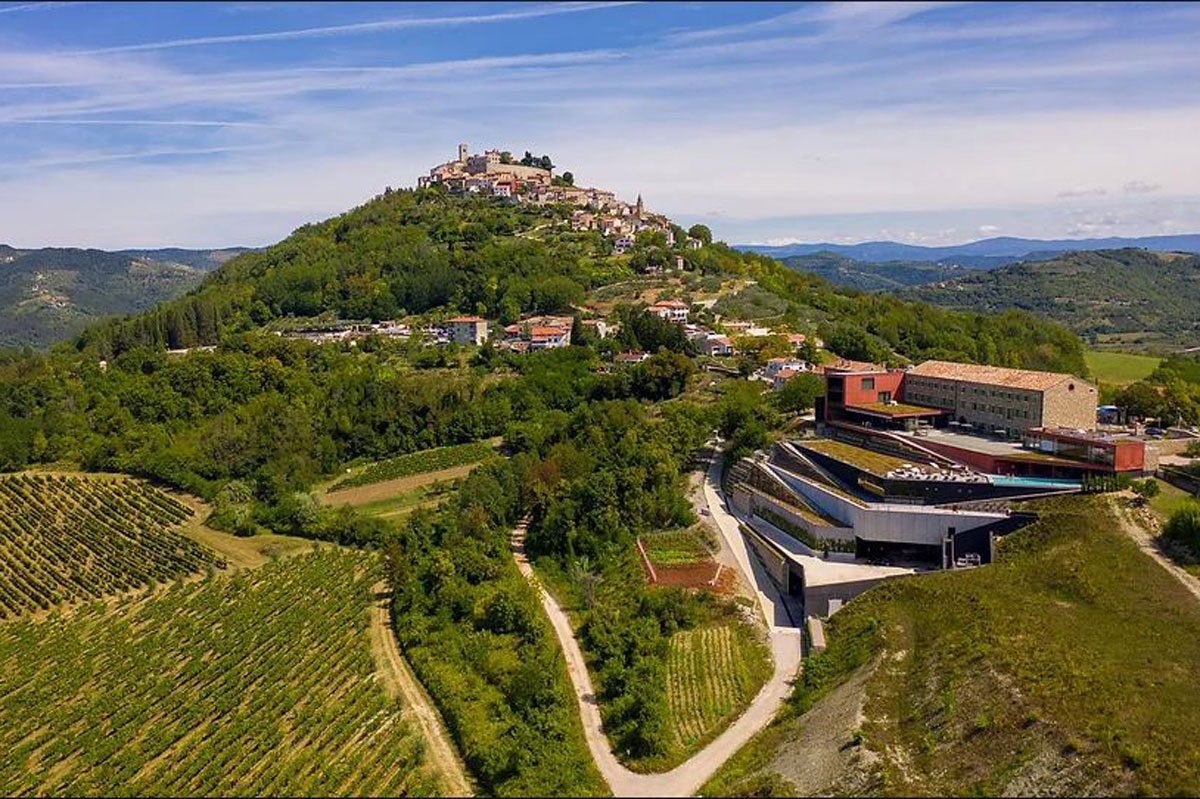
Final thoughts about Istria as a wine region
Istria is more than just a region producing exceptional wines; it’s a destination inviting you to immerse yourself in the essence of winemaking. Enotourism, a seamless blend of oenology and tourism, offers an unparalleled opportunity to explore Istria’s rich wine culture up close and personal.
Step into Istria’s picturesque landscapes adorned with rows of vineyards. Guided tours take you through the meticulous process of cultivating grapes, offering insights into the terroir, grape varieties, and sustainable practices that shape Istrian wines.
Descend into Istrian cellars and modern winemaking facilities, where the alchemy of fermentation and aging takes place. Witness the winemaker’s art unfold as you explore the barrels and tanks where wines transform into liquid poetry.
Enotourism offers the exquisite pleasure of tasting Istria’s wines in their birthplace. From crisp whites to velvety reds, each sip carries the whisper of the land, inviting you to uncover the stories behind the labels.
Istria is an indulgence not limited to wines alone. Pair your tastings with Istria’s exceptional cuisine—truffles, olive oils, and other locally sourced delicacies. Discover how flavours harmonize and elevate the overall experience.
Immerse yourself in the stories of the passionate individuals behind the wines. Meet the winemakers, whose dedication and expertise infuse every bottle with character and charm. Learn about their journey, philosophy, and the nuances that make each vintage unique.
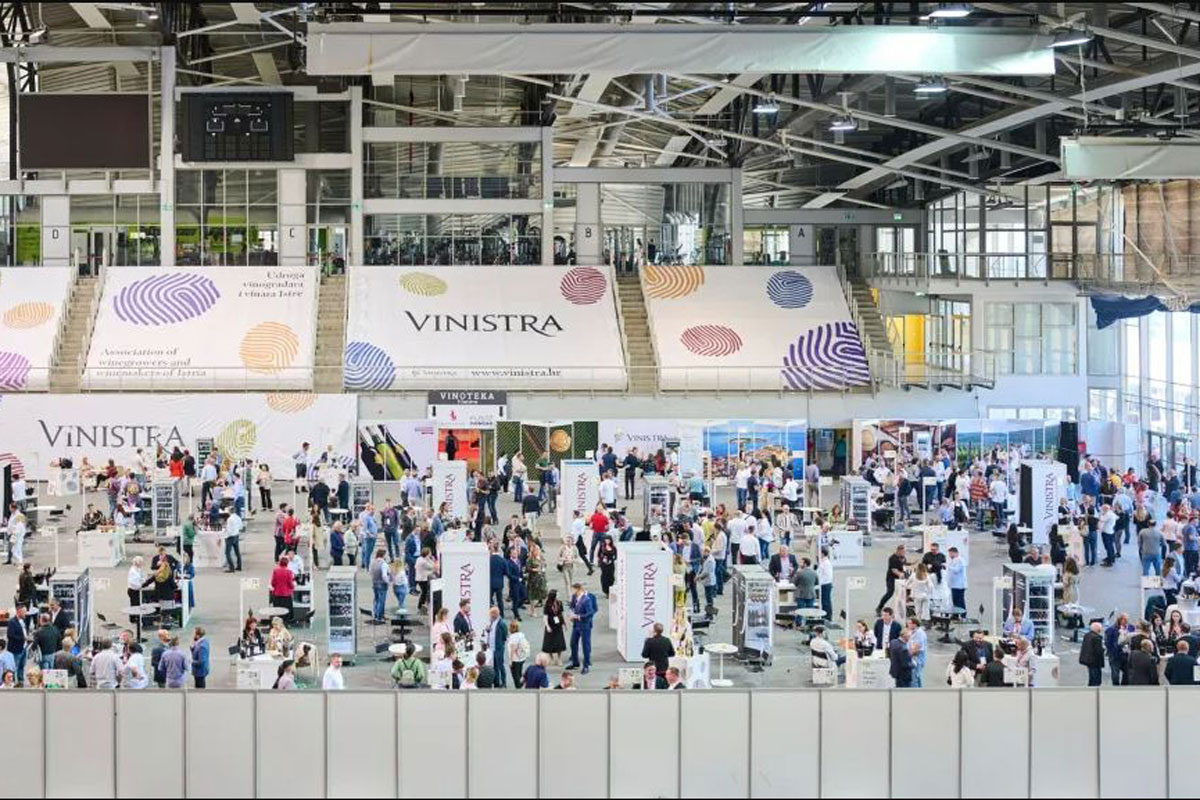
Istria comes alive during its vibrant wine festivals and events. From Vinistra in Poreč to Vinistra Expo in Pula, these gatherings celebrate the region’s winemaking heritage, providing a platform to taste, learn, and connect.
Istria’s enotourism is a sensory journey that transcends the glass. It’s an invitation to step into the shoes of a winemaker, to understand the complexities of viticulture, and to savour the fruits of nature’s labour. With every sip and every story, you’ll forge a deeper connection to the land, the people, and the traditions that make Istrian wines truly exceptional.




